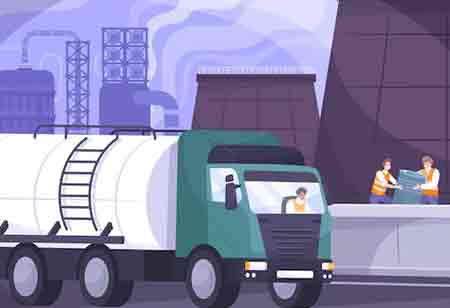Fremont, CA: Transporting chemicals demands meticulous planning, the use of proper equipment, and strict adherence to established safety protocols. Whether the chemicals are hazardous or non-hazardous, improper handling poses risks to people, property, and the environment. It is essential to implement a combination of proper packaging, suitable transportation methods, regulatory compliance, and effective risk management practices to prevent spills during chemical transportation.
The first step to ensuring safe transport is selecting the proper containers for the chemicals.
Packaging must be compatible with the chemical's properties to prevent reactions or degradation. Corrosive substances like acids or alkalis require specially lined containers that resist corrosion. Containers should be tightly sealed to avoid leaks during handling and transit. Labeling and documentation are equally critical in chemical transportation. Proper labeling with clear hazard symbols, handling instructions, and emergency contact information ensures that everyone involved knows the contents and their associated risks. It helps handlers and emergency responders take swift, informed actions in case of an incident.
Transporting chemicals requires selecting appropriate vehicles and equipment. Vehicles must be equipped to secure containers to prevent movement or tipping during transit. Specialized tankers with reinforced materials and spill containment systems are often necessary for liquid chemicals. Temperature-sensitive chemicals may require climate-controlled vehicles to maintain stability. The mode of transportation—whether by road, rail, sea, or air—must align with the nature of the chemicals and the specific safety requirements for each mode. Compliance with regulations and industry standards is a cornerstone of safe chemical transportation.
National and international rules, such as the U.S. Department of Transportation (DOT) guidelines, the International Maritime Dangerous Goods (IMDG) Code, and the International Air Transport Association (IATA) Dangerous Goods Regulations, provide comprehensive frameworks for packaging, labeling, and transporting hazardous materials. Adherence to these regulations minimizes risks and ensures legal accountability. Regular training for personnel involved in chemical handling is essential to maintaining compliance and promoting a safety culture. Preventing spillage involves thorough risk assessment and contingency planning.
Constant vigilance and monitoring throughout the transportation process enhance safety. Regularly checking containers, vehicle conditions, and environmental factors such as temperature and pressure can help detect and address potential issues before they escalate. Technology like GPS tracking and real-time monitoring systems ensures better oversight and quicker response times in case of deviations or emergencies. Safely transporting chemicals without spillage relies on a comprehensive approach encompassing proper packaging, regulatory compliance, risk assessment, and skilled handling.

